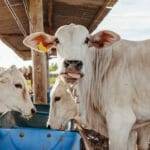Main Points In Hindi (मुख्य बातें – हिंदी में)
-
छिपी हुई लागत का अनुमान: संयुक्त राष्ट्र के खाद्य एवं कृषि संगठन (FAO) द्वारा किए गए अध्ययन में पाया गया है कि वैश्विक कृषि खाद्य प्रणालियों की वार्षिक छिपी हुई लागत लगभग 12 ट्रिलियन अमेरिकी डॉलर है, जिसमें से 70% (8.1 ट्रिलियन डॉलर) अस्वास्थ्यकर आहार पैटर्न से उत्पन्न होते हैं।
-
स्वास्थ्य प्रभाव: अस्वास्थ्यकर आहार पैटर्न हृदय रोग, स्ट्रोक और मधुमेह जैसे गैर-संचारी बीमारियों के साथ जुड़ा हुआ है। अध्ययन में 13 आहार संबंधी जोखिम कारकों की पहचान की गई है, जिनमें साबुत अनाज, फल और सब्जियों का अपर्याप्त सेवन शामिल है।
-
पर्यावरणीय और सामाजिक लागत: विभिन्न कृषि खाद्य प्रणालियों में अव्यवस्थित कृषि प्रथाओं के कारण पर्यावरणीय लागतें अधिक हैं, जैसे ग्रीनहाउस गैस उत्सर्जन और जल प्रदूषण। इसके अलावा, सामाजिक लागतें गरीबी और अल्पपोषण से संबंधित हैं, जो पारंपरिक और दीर्घकालिक संकट वाले कृषि खाद्य प्रणालियों में अधिक प्रचलित हैं।
-
सुधार के लिए दिशा-निर्देश: रिपोर्ट विभिन्न कृषि खाद्य प्रणालियों के प्रकारों को समझने और उनके भीतर छिपी लागतों की पहचान करने की आवश्यकता पर जोर देती है। इसका उद्देश्य टिकाऊ, लचीला और समावेशी कृषि खाद्य प्रणाली के विकास के लिए वास्तविक लागत लेखांकन का उपयोग करना है।
- सामूहिक कार्रवाई की आवश्यकता: रिपोर्ट में सामूहिक कार्रवाई का आह्वान किया गया है, जिसमें किसानों, कृषि व्यवसायों, सरकारों और उपभोक्ताओं की भागीदारी शामिल है। मात्रात्मक आर्थिक उपायों से आगे बढ़ते हुए, निर्णय लेने में अधिक सूचित विकल्पों की आवश्यकता है ताकि खाद्य सुरक्षा और पोषण में सुधार किया जा सके।
Main Points In English(मुख्य बातें – अंग्रेज़ी में)
Here are the main points derived from the article:
-
Global Hidden Costs of Unhealthy Diets: A study by the Food and Agriculture Organization (FAO) reveals that global agricultural food systems incur hidden costs of approximately $12 trillion annually, with around 70% ($8.1 trillion) attributed to unhealthy dietary patterns. These costs are primarily linked to serious non-communicable diseases like heart disease, stroke, and diabetes.
-
Dietary Risks and Agricultural Systems: The report identifies 13 dietary risk factors impacting health, including inadequate consumption of whole grains, fruits, and vegetables, excessive sodium intake, and high consumption of red and processed meats. Different agricultural systems exhibit significant variance in how these risks manifest.
-
Environmental and Social Impacts: The environmental costs associated with unsustainable agricultural practices are significant, contributing to greenhouse gas emissions, land-use changes, and water pollution. Affected by these practices, traditional agricultural systems face severe social costs tied to poverty and malnutrition.
-
Call for Systemic Change: The analysis promotes the need for value-driven transformation of agricultural food systems towards sustainability, inclusivity, and efficiency, emphasizing the importance of recognizing hidden costs through actual cost accounting.
- Collective Action Required: The report highlights that achieving this transformation requires coordinated efforts across various stakeholders—farmers, governments, businesses, and consumers—underscoring that the choices made today will shape a sustainable future for all.


Complete News In Hindi(पूरी खबर – हिंदी में)
अस्वास्थ्यकर आहार पैटर्न वैश्विक कृषि खाद्य प्रणालियों की वार्षिक छिपी हुई लागत में 8 ट्रिलियन अमेरिकी डॉलर का योगदान देता है
12 नवंबर 2024
साबुत अनाज, फलों और सब्जियों का अपर्याप्त सेवन, अन्य आहार जोखिमों के साथ, कृषि खाद्य प्रणालियों में स्वास्थ्य संबंधी छिपी हुई लागतों को बढ़ा रहा है। (अस्वास्थ्यकर आहार पैटर्न)
काइटेटूर समाचार- द्वारा एक परिष्कृत अध्ययन संयुक्त राष्ट्र का खाद्य एवं कृषि संगठन (एफएओ) जिसमें 156 देश शामिल हैं, यह पुष्टि करता है कि वैश्विक कृषि खाद्य प्रणालियों के भीतर छिपी लागत सालाना लगभग 12 ट्रिलियन अमेरिकी डॉलर है।
इस आंकड़े में से, लगभग 70 प्रतिशत (यूएस $8.1 ट्रिलियन) अस्वास्थ्यकर आहार पैटर्न से उत्पन्न होते हैं और हृदय रोग, स्ट्रोक और मधुमेह जैसी खतरनाक गैर-संचारी बीमारियों (एनसीडी) से जुड़े होते हैं, जो पर्यावरणीय गिरावट और सामाजिक असमानताओं से संबंधित लागत से कहीं अधिक है।
खाद्य एवं कृषि राज्य 2024 (SOFA), पर बनाता है 2023 संस्करण और भी अधिक गहन विश्लेषण प्रदान करने के लिए, उपयोग करना वास्तविक लागत लेखांकन खाद्य उत्पादन, वितरण और उपभोग से जुड़ी लागतों और लाभों की पूरी श्रृंखला को उजागर करना, जिसमें वे लागतें भी शामिल हैं जो बाजार की कीमतों में प्रतिबिंबित नहीं होती हैं – तथाकथित “छिपी हुई लागत और लाभ”। एफएओ की एक विज्ञप्ति के अनुसार, रिपोर्ट उन लागत अनुमानों को अद्यतन करती है, उन्हें कृषि खाद्य प्रणाली के प्रकारों से विभाजित करती है, और हमारे कृषि खाद्य प्रणालियों में परिवर्तनकारी परिवर्तन के लिए एक पाठ्यक्रम तैयार करती है।
अध्ययन में बताया गया है कि ऊपरी-मध्यम और उच्च आय वाले देशों में अधिक औद्योगिक कृषि खाद्य प्रणालियों में वैश्विक छिपी हुई लागतें बड़े पैमाने पर स्वास्थ्य छिपी लागतों से प्रेरित होती हैं, इसके बाद पर्यावरणीय छिपी लागतें होती हैं। स्वास्थ्य प्रभावों की जांच में, रिपोर्ट 13 आहार संबंधी जोखिम कारकों की पहचान करती है। इनमें साबुत अनाज, फल और सब्जियों का अपर्याप्त सेवन शामिल है; अत्यधिक सोडियम की खपत; और लाल और प्रसंस्कृत मांस का अधिक सेवन, विभिन्न कृषि खाद्य प्रणालियों में उल्लेखनीय अंतर के साथ।
ऐतिहासिक रूप से, कृषि खाद्य प्रणालियाँ पारंपरिक से औद्योगिक में परिवर्तित हो गई हैं, प्रत्येक के अलग-अलग परिणाम और छिपी हुई लागतें हैं। इस कारण से, रिपोर्ट यह पता लगाती है कि दुनिया भर में विभिन्न कृषि खाद्य प्रणाली प्रकारों में छिपी हुई लागतें कैसे प्रकट होती हैं।
विश्लेषण को सुविधाजनक बनाने के लिए, अनुसंधान एक टाइपोलॉजी प्रस्तुत करता है जो कृषि खाद्य प्रणालियों को छह अलग-अलग समूहों में वर्गीकृत करता है: दीर्घकालिक संकट, पारंपरिक, विस्तार, विविधीकरण, औपचारिक और औद्योगिक। यह ढांचा प्रत्येक प्रणाली में निहित अद्वितीय चुनौतियों और अवसरों की लक्षित समझ की अनुमति देता है, जिससे अनुरूप नीतियों और हस्तक्षेपों के विकास को सक्षम किया जा सकता है।
उदाहरण के लिए, जबकि अधिकांश कृषि खाद्य प्रणालियों में साबुत अनाज की कम मात्रा वाला आहार प्रमुख आहार जोखिम कारक है, दीर्घकालिक संकट प्रणालियों (जो लंबे समय तक संघर्ष, अस्थिरता और व्यापक खाद्य असुरक्षा का सामना कर रहे हैं) और पारंपरिक प्रणालियों (कम उत्पादकता, सीमित प्रौद्योगिकी अपनाने की विशेषता) में, और छोटी मूल्य श्रृंखलाएं), प्राथमिक चिंता फलों और सब्जियों का कम सेवन है।
उच्च सोडियम सेवन एक और महत्वपूर्ण चिंता का विषय है, जैसे-जैसे कृषि खाद्य प्रणालियाँ पारंपरिक से औपचारिकीकरण की ओर विकसित होती हैं, बाद में चरम पर पहुँचती हैं और फिर औद्योगिक प्रणालियों में घटती जाती हैं, यह ऊपर की ओर प्रवृत्ति प्रदर्शित करती है। इसके विपरीत, पारंपरिक से औद्योगिक प्रणालियों में संक्रमण के दौरान प्रसंस्कृत और लाल मांस की उच्च खपत लगातार बढ़ रही है, जहां यह शीर्ष तीन आहार जोखिमों में से एक है।
आहार संबंधी जोखिमों के अलावा, अस्थिर कृषि पद्धतियों का पर्यावरणीय प्रभाव छिपी हुई लागत के बोझ में महत्वपूर्ण योगदान देता है। विविध कृषि-खाद्य प्रणालियों वाले देशों में ग्रीनहाउस गैस उत्सर्जन, नाइट्रोजन अपवाह, भूमि-उपयोग परिवर्तन और जल प्रदूषण से जुड़ी लागत विशेष रूप से अधिक है – जहां तेजी से आर्थिक विकास के साथ-साथ खपत और उत्पादन पैटर्न विकसित होते हैं – अनुमानित $ 720 बिलियन तक पहुंच जाते हैं। औपचारिकीकरण और औद्योगिक कृषि खाद्य प्रणालियों को भी महत्वपूर्ण पर्यावरणीय लागतों का सामना करना पड़ता है। हालाँकि, लंबे समय तक संकट का सामना करने वाले देशों को सबसे अधिक सापेक्ष पर्यावरणीय लागत वहन करनी पड़ती है, जो उनके सकल घरेलू उत्पाद के 20 प्रतिशत के बराबर है।
गरीबी और अल्पपोषण सहित सामाजिक लागतें, पारंपरिक कृषि-खाद्य प्रणालियों और दीर्घकालिक संकटों से प्रभावित लोगों में सबसे अधिक प्रचलित हैं। ये सामाजिक लागतें क्रमशः सकल घरेलू उत्पाद का 8 और 18 प्रतिशत दर्शाती हैं, जो बेहतर आजीविका और एकीकृत मानवीय, विकास और शांति निर्माण प्रयासों की तत्काल आवश्यकता पर प्रकाश डालती हैं। SOFA 2024 स्थानीय संदर्भों को अपनाने और हितधारक प्राथमिकताओं को पकड़ने के महत्व को रेखांकित करता है। इसे ऑस्ट्रेलिया, ब्राज़ील, कोलंबिया, इथियोपिया, भारत और यूनाइटेड किंगडम सहित विभिन्न देशों और कृषि खाद्य प्रणाली प्रकारों का प्रतिनिधित्व करने वाले केस अध्ययनों के माध्यम से चित्रित किया गया है।
सामूहिक कार्रवाई का आह्वान
कुल मिलाकर, रिपोर्ट कृषि खाद्य प्रणालियों को अधिक टिकाऊ, लचीला, समावेशी और कुशल बनाने के लिए मूल्य-संचालित परिवर्तन का आह्वान करती है। इसके लिए छिपी हुई लागतों को पहचानने के लिए वास्तविक लागत लेखांकन का उपयोग करके जीडीपी जैसे पारंपरिक आर्थिक उपायों से परे जाने की आवश्यकता है। इस दृष्टिकोण के साथ, निर्णयकर्ता अधिक सूचित विकल्प चुन सकते हैं जो खाद्य सुरक्षा, पोषण, जैव विविधता संरक्षण और सांस्कृतिक पहचान में उनकी आवश्यक भूमिकाओं को स्वीकार करते हुए कृषि खाद्य प्रणालियों के सामाजिक मूल्य को बढ़ाते हैं। इस परिवर्तन को प्राप्त करने के लिए क्षेत्रीय विभाजनों को पाटना, स्वास्थ्य, कृषि और पर्यावरण में नीतियों को संरेखित करना और यह सुनिश्चित करना भी आवश्यक है कि लाभ और लागत सभी हितधारकों के बीच समान रूप से साझा किए जाएं।
”अब हम जो विकल्प चुनते हैं, जो प्राथमिकताएं हम तय करते हैं और जो समाधान हम लागू करते हैं, वे हमारे साझा भविष्य को निर्धारित करेंगे। वास्तविक परिवर्तन व्यक्तिगत कार्यों और पहलों से शुरू होता है, जो सक्षम नीतियों और लक्षित निवेशों द्वारा समर्थित होते हैं। वैश्विक कृषि खाद्य प्रणालियों का परिवर्तन एसडीजी को प्राप्त करने और सभी के लिए समृद्ध भविष्य सुरक्षित करने के लिए मौलिक है, ”एफएओ के महानिदेशक क्यूयू डोंगयु ने कहा। रिपोर्ट इस बात पर जोर देती है कि इस परिवर्तन के लिए सामूहिक कार्रवाई की आवश्यकता है, जिसमें प्राथमिक उत्पादक, कृषि व्यवसाय, सरकारें, वित्तीय संस्थान, अंतर्राष्ट्रीय संगठन और उपभोक्ता शामिल हों। जबकि छिपी हुई लागतों को संबोधित करने से हितधारकों, देशों और समय-सीमाओं पर असमान प्रभाव पड़ेगा, सहायक नीतियां और नियम स्थायी प्रथाओं को शीघ्र अपनाने और कमजोर सामाजिक समूहों की रक्षा करके, विशेष रूप से छोटे पैमाने के उत्पादकों और कृषि व्यवसायों के लिए व्यवधानों को कम करने में मदद कर सकते हैं।
(अस्वास्थ्यकर आहार पैटर्न वैश्विक कृषि खाद्य प्रणालियों की वार्षिक छिपी हुई लागत में 8 ट्रिलियन अमेरिकी डॉलर का योगदान देता है)
संबंधित
Complete News In English(पूरी खबर – अंग्रेज़ी में)
Unhealthy Diet Patterns Contribute $8 Trillion Annually to Global Hidden Costs in Agriculture Food Systems
Insufficient intake of whole grains, fruits, and vegetables is increasing health-related hidden costs in agricultural food systems. (Unhealthy Diet Patterns)
According to a refined study by the Food and Agriculture Organization of the United Nations (FAO), involving 156 countries, the hidden costs within global agricultural food systems are estimated at around $12 trillion per year.
Out of this total, roughly 70% (around $8.1 trillion) stems from unhealthy diet patterns, leading to dangerous non-communicable diseases (NCDs) like heart disease, stroke, and diabetes, which surpass the costs related to environmental degradation and social inequalities.
The State of Food and Agriculture 2024 (SOFA) builds upon the 2023 edition and provides further in-depth analysis through real cost accounting, revealing the full range of costs and benefits associated with food production, distribution, and consumption, including those that are not reflected in market prices—referred to as “hidden costs and benefits.” A statement from the FAO confirms that the report updates cost estimates, categorizes them by types of agricultural food systems, and outlines a path towards transformative changes in these systems.
The study shows that in upper-middle and high-income countries, the majority of the global hidden costs are driven by health-related factors, followed by environmental hidden costs. When examining health impacts, the report identifies 13 dietary risk factors, including insufficient consumption of whole grains, fruits, and vegetables; excessive sodium intake; and high consumption of red and processed meats, with significant variability across different agricultural food systems.
Historically, agricultural food systems have transitioned from traditional to industrial forms, each with different outcomes and hidden costs. Therefore, the report explores how hidden costs manifest across diverse types of agricultural food systems worldwide.
To facilitate analysis, the research presents a typology that classifies agricultural food systems into six distinct groups: chronic crisis, traditional, expansion, diversification, formal, and industrial. This framework allows for a targeted understanding of the unique challenges and opportunities inherent in each system, enabling the development of tailored policies and interventions.
For instance, while low whole grain diets are a major dietary risk factor across most agricultural food systems, the primary concern in chronic crisis systems (facing prolonged struggles, instability, and widespread food insecurity) and traditional systems (characterized by low productivity and limited technology adoption) is low fruit and vegetable intake.
High sodium intake is another significant concern, as agricultural food systems evolve from traditional to formalization, peaking and then declining in industrial systems. Conversely, during the transition from traditional to industrial systems, high consumption of processed and red meats continues to increase, ranking among the top three dietary risks.
Apart from dietary risks, the environmental impacts of unstable agricultural practices contribute significantly to hidden cost burdens. Countries with diverse agricultural-food systems face substantial costs associated with greenhouse gas emissions, nitrogen runoff, land-use change, and water pollution—often reaching up to an estimated $720 billion—as consumption and production patterns develop along with rapid economic growth. Industrial agricultural food systems also encounter considerable environmental costs. However, countries facing long-term crises bear the highest relative environmental costs, equating to about 20% of their GDP.
Social costs, including poverty and undernourishment, are most prevalent among those affected by traditional agricultural-food systems and chronic crises. These social costs represent 8% and 18% of GDP respectively, highlighting an urgent need for better livelihoods and integrated humanitarian, development, and peace-building efforts. SOFA 2024 emphasizes the importance of adopting local contexts and capturing stakeholder preferences, illustrated through case studies representing various countries and types of agricultural-food systems, including Australia, Brazil, Colombia, Ethiopia, India, and the United Kingdom.
Call for Collective Action
Overall, the report calls for value-driven changes to make agricultural food systems more sustainable, resilient, inclusive, and efficient. This requires moving beyond traditional economic measures like GDP to identify hidden costs through real cost accounting. With this approach, decision-makers can make better-informed choices that enhance the social value of agricultural food systems while recognizing their critical roles in food security, nutrition, biodiversity conservation, and cultural identity. Achieving this transformation also necessitates bridging regional divides, aligning policies across health, agriculture, and environment sectors, and ensuring that benefits and costs are shared equitably among all stakeholders.
“The choices we make now, the priorities we set, and the solutions we implement will determine our shared future. Real change starts with individual actions and initiatives supported by enabling policies and targeted investments. Transforming global agricultural food systems is fundamental to achieving the SDGs and securing a prosperous future for everyone,” stated FAO Director-General QU Dongyu. The report emphasizes the need for collective action involving primary producers, agribusinesses, governments, financial institutions, international organizations, and consumers. Addressing hidden costs will have varying impacts on stakeholders, countries, and timelines; however, supportive policies and regulations can aid in rapidly adopting sustainable practices and minimizing disruptions, particularly for vulnerable social groups, especially small-scale producers and agribusinesses.
(Unhealthy Diet Patterns Contribute $8 Trillion Annually to Global Hidden Costs in Agriculture Food Systems)
Related
This simplified version retains the core information while presenting it in a more accessible, straightforward manner.






